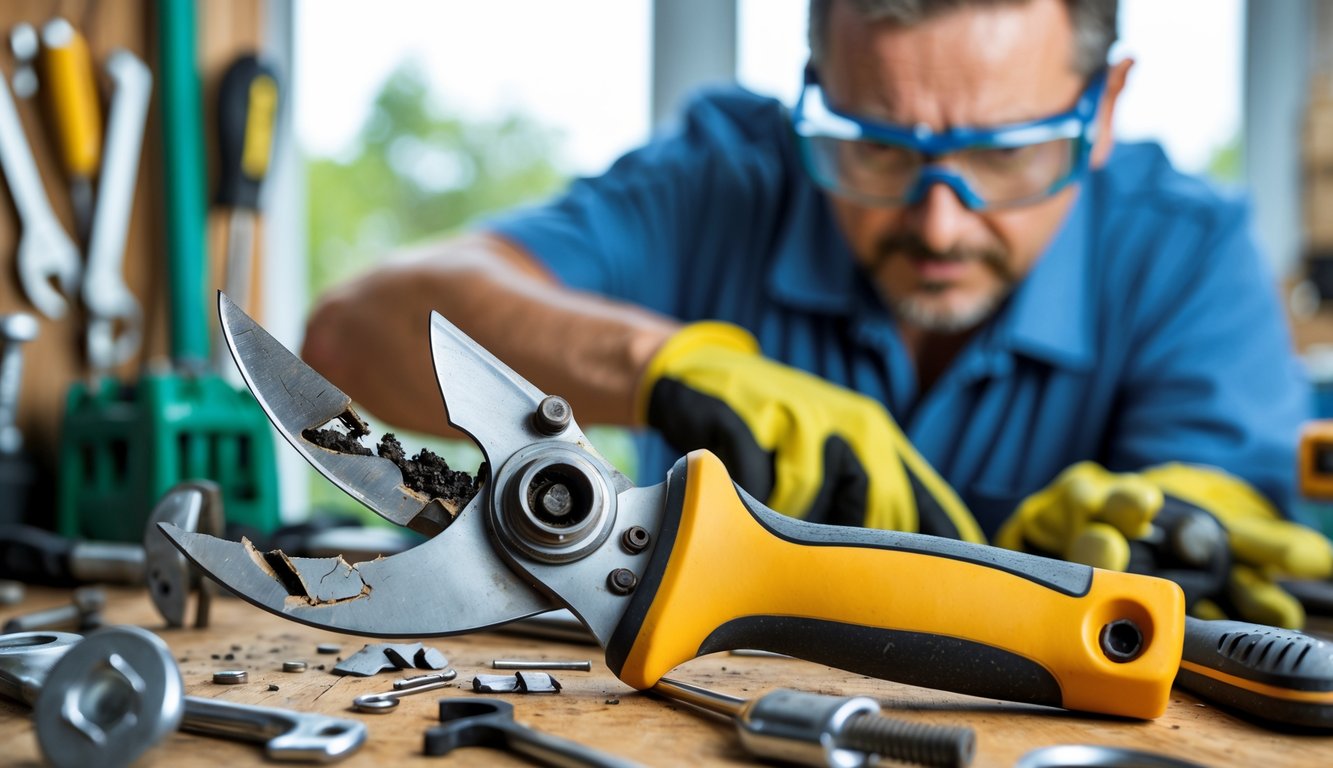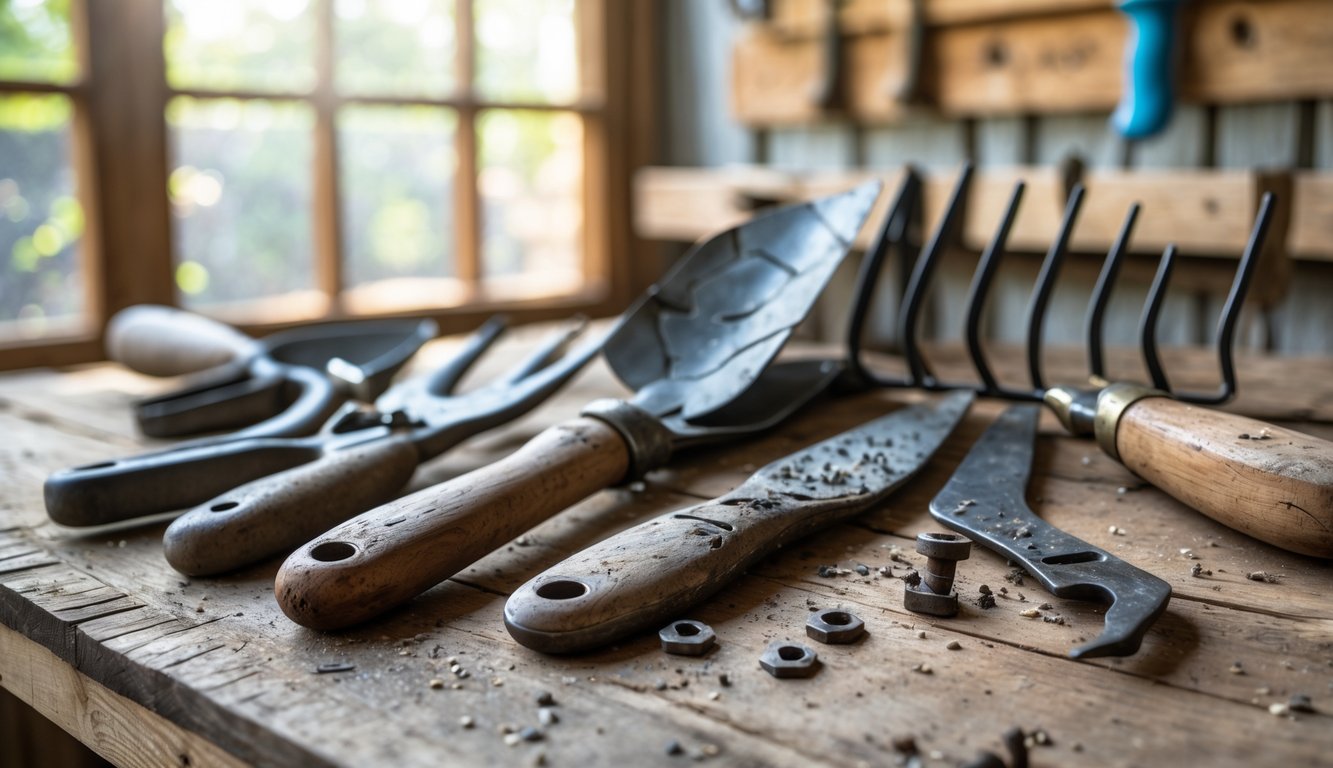
Wear and Tear in Garden Tools

Forget all those promises about longevity—my tools wear out faster than I can finish my coffee. It’s not just age. It’s rain, mud, sticky resin, and cheap alloys that ruin my weekend plans. Watching a “rustproof” blade corrode? That’s about as fun as losing your car keys.
Environmental Factors Contributing to Degradation
It’s kind of ridiculous how leaving tools outside turns them into science projects. Rain sneaks into every joint. Last week, my bypass pruners got this weird gritty finish after just an hour under a leaky roof. Turns out, moisture plus dirt grinds down edges. Loam cakes up on shovel heads, eats through coatings, and everyone blames “heavy use” like clean storage is some mythical goal. Sun? UV fries rubber grips until they’re brittle. “Ergonomic” or not, you’re stuck with sweaty hands in July.
Frost just makes everything tighter—until a heatwave peels resin off in flakes. By August, my black trowel looks like a fossil. Never been near paint, just sun and rain. Too-wet conditions? Experts say that’s how handles rot, but who actually re-oils wooden grips as much as they’re supposed to?
Material Fatigue and Its Effects
Manufacturers never really admit what happens when fatigue sets in. You sharpen, tighten, baby your favorite secateurs, and then one day—wobbly pivot, lost tension, mystery nicks. Metal fatigue sneaks up, like your phone battery dying faster each week. Tool wear isn’t magic—edges dull, microcracks show up, even with gentle use. Research says repeated stress cycles and cheap steel make mass-market tools fail faster.
Ever notice how cheap loppers lose their spring way before the bumper gives out? It’s not theoretical—the inside of a worn-out tool is a mess of stress marks, which nobody at the store ever talks about. I tried “indestructible” forks once. By year two, the tines were bent beyond hope. And those “cushioned” handles? Peeled off after thirty uses. Packaging promises, reality disappoints.
Maintenance Practices and Their Role

Honestly, I’d pay for a tool that just fixes itself. Who decided garden shears needed bolts that rust if you breathe on them? Parts snap, handles crack, “weatherproof” rivets seize up before you even hose them down. Keeping tools going isn’t luck—it’s half obvious, half stuff everyone ignores until it’s too late. Skip a step, and you pay for it.
Importance of Regular Maintenance
Last season, my pruner grips splintered. I wiped them down like the guides say, but dirt still packed in like grout. Experts at UC Agriculture swear clean tools cut better, feel safer, and supposedly even stop plant diseases. Sharp edges save your wrist, too. Sounds silly, but a dull shovel twists your arm or sends you off course, and suddenly you’re swearing at a tulip.
Pros? They actually line up their tools every day—oil, rag, tiny wire brush, the works. Five minutes per tool. Some folks swear by boiled linseed oil for wood and metal, keeps rust down and stops handles from snapping. Makes sense, honestly, considering how often I end up buying replacements. Still, look around any garage sale—crusty spades everywhere. Guess most people don’t get the memo unless they’re in the Master Gardener club.
Preventive Maintenance Approaches
Okay, so, preventive maintenance—nobody gets excited about it, but honestly, if you don’t keep up with the boring stuff like sharpening, oiling, or, I dunno, sanding off gunk, you’re gonna be buying new tools way sooner than you want. I literally have “clean hedge shears” scribbled on my phone calendar. Not because I’m some organization wizard—mostly because if I skip it, the next rainy weekend turns everything into a rusty disaster zone. Lists? I make them, then lose them. What actually works? Those dumb little app reminders built into garden planner apps. I know, sounds ridiculous, but they save more tools than my neighbor’s duct tape “solutions” ever did. (His loppers don’t even open now, but hey, he tried.)
So OSU Extension Service claims—here’s the link—that dunking steel parts in a sand-oil bucket after cleaning makes them weatherproof. I tried it. Destroyed a saucepan, but the tools survived. If you want to stop replacing stuff, just buy some boiled linseed oil, slap a label on a storage bin, and pretend you’re scheduling a doctor’s appointment for your gear. Nobody ever mentions the “remembering to do it” part. But honestly? If you don’t, you’ll forget, and then you’re back to fixing the same busted junk. Prevention is king. Memory, though—mine sucks.
Diagnosing the Root Causes of Equipment Failure
I’ve snapped so many garden hoes mid-swing, it’s like a curse. And—surprise—it’s always the same cheap plastic joint. But what’s actually going on? It’s not just “bad luck” or “cheap parts.” It’s the fact that nobody ever stops to figure out the real reason stuff fails. Root cause analysis? Most people skip it or just blame the weather.
Conducting Effective Root Cause Analysis
Forget the seminars and PowerPoints. I watched someone last fall blame a dull pruner on fate, not the rusted-out screw that’d been ignored for ages. That’s classic. Real root cause analysis means you have to get your hands dirty—take things apart, ignore the “it just wore out” excuse, and keep asking why until you’re almost embarrassed. I once busted open a trowel that cracked in wet dirt, and only then noticed the resin at the handle base was a mess—straight up a factory screw-up, not user error.
I like the idea of structured methods like TapRooT or fishbone diagrams, but come on, nobody actually stops at every “why” unless they’re being paid by the hour. (“Why did the shaft bend?” “Because the supplier switched metal grade.” “Why did they do that?” “Because someone wanted to save a nickel.”) There’s a step-by-step guide that tells you to track what happened, troubleshoot, list causes, and actually fix something instead of blaming the apprentice. But it never plays out as neatly as they say.
Failure Mode and Effects Analysis (FMEA)
If you ever kept a repair log, you know the drill: every April, some idiot (usually me) overtightens a bolt and then wonders why the handle cracks. FMEA says you should map out every possible way things can fail, give it a score for how bad, how often, and how easy it is to spot. Like a pilot’s checklist, except I never finish those because the phone rings or the dog needs out. But those severity scores matter—my torque wrench disaster last year? Should’ve seen it coming.
A real FMEA for garden tools? It’s a mess of tables, arguments, and someone always saying, “The manufacturer should’ve known better.” Engineers love it, but without it, warranties are useless and the landfill gets full before summer. Companies are finally getting the hint and using FMEA before production, not after, which is probably the only reason some tools last longer than a month. Here’s a research link if you’re into that. Still waiting for a tool labeled “guaranteed idiot-proof,” but at least I can flag the lemons before spring turns my shed into a graveyard.